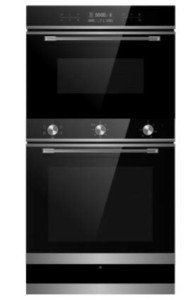The Rise of Built-In Ovens: A Seamless Approach to Modern Cooking
In modern kitchen areas, where design looks mix flawlessly with performance, one appliance stands out as a real video game changer: the built-in oven. As house owners and chefs alike continue to seek innovative options that improve their cooking experience, built-in ovens have become increasingly popular. This short article explores the advantages, factors to consider, and trends surrounding built-in ovens, highlighting why they are an essential function in modern cooking spaces.
What is a Built-In Oven?
A built-in oven is a kitchen area home appliance designed to be integrated into the cabinetry of a kitchen rather than standing alone. Unlike traditional freestanding ovens, which can be moved and placed anywhere, built-in ovens come in different designs and sizes to fit particularly within designated areas. Offered in single or double configurations, these ovens offer a streamlined appearance that complements modern-day kitchen area styles.
Advantages of Built-In Ovens
1. Space-Saving Design
Among the most attractive benefits of built-in ovens is their space-saving design. By integrating the oven into kitchen cabinetry, you can release up valuable counter and flooring area. This is especially advantageous in smaller sized cooking areas, where optimizing space is vital. Built-in ovens can be installed at eye level, making them more accessible and decreasing the requirement to flex down.
2. Visual Appeal
Built-in ovens add to a streamlined and cohesive kitchen area design. Readily available in different finishes-- such as stainless steel, black, white, and custom cabinets-- they can mix flawlessly into the general design. This visual appeal boosts the cooking area's visual consistency and raises the space, creating a modern-day and advanced environment.
3. Boosted Functionality
Many built-in ovens come equipped with sophisticated cooking innovations, such as convection cooking, steam ovens, and wise features. These improvements enable flexible cooking alternatives, making it much easier to achieve professional-level results at home. Smart built-in ovens can even link to Wi-Fi, enabling users to manage the oven from another location, get notifications, and access a variety of cooking programs and dishes.
4. Improved Ventilation
Because built-in ovens can be integrated with cooking area hoods and ventilation systems, they can help preserve much better air quality and minimize cooking smells. This is particularly considerable for those who love to prepare with fragrant spices and ingredients, as an efficient ventilation system can keep the kitchen comfortable and welcoming.
5. Personalization Options
Built-in ovens provide a large range of personalization choices to suit specific cooking styles and requirements. From professional-grade home appliances with numerous cooking modes to compact designs for smaller sized cooking areas, homeowners can select the oven that fits their particular requirements. Numerous makers also provide personalized front panels, enabling you to match the oven's look to your kitchen cabinetry for a truly combined appearance.
Factors to consider When Choosing a Built-In Oven
While built-in ovens have lots of advantages, there are essential considerations to bear in mind before buying:
1. Rate
Built-in ovens generally include a greater price than their freestanding counterparts due to their design and setup requirements. It's important to consider both the cost of the oven and any additional expenses connected to kitchen cabinetry adjustments or setup.
2. Installation Requirements
Installing a built-in oven often requires professional assistance, especially if you require to modify existing cabinets. Ensure that you consider any expenses connected with setup, consisting of labor and possible cabinetry changes.
3. Size and Dimensions
Before buying a built-in oven, determine the designated space accurately to guarantee a correct fit. Built-in ovens can be found in different sizes and setups, so picking one that aligns with your requirements and cooking area design is crucial.
4. Lifestyle and Usage
Consider your cooking habits and needs when choosing a built-in oven. If you regularly host big gatherings, a double oven might be more helpful. On the other hand, if you have a compact cooking area, a single-wall oven might be adequate.
Patterns in Built-In Ovens
The kitchen appliance market is continuously evolving, and built-in ovens are not exempt from emerging trends. Some existing trends consist of:
Smart Technology Integration: With the increase of clever home technology, built-in ovens now typically include connectivity choices. This allows users to keep track of cooking development and adjust settings by means of mobile apps.
Energy Efficiency: As sustainability becomes a priority, many makers are investing in energy-efficient built-in ovens that minimize energy consumption while preserving performance.

bulit-in ovens -functional Designs: Built-in ovens now use features such as air frying, sluggish cooking, and steaming, providing adaptability that satisfies a wide variety of cooking approaches.
built in range oven -in ovens unquestionably represent a perfect mix of style, function, and convenience in today's kitchen areas. As more homeowners choose this modern option, the focus moves to developing a cooking area that is as visually pleasing as it is practical. Whether you are building a new home or remodeling your kitchen, considering a built-in oven might elevate your culinary experience and change your kitchen into an elegant and functional sanctuary. With a variety of choices readily available and continuous developments in technology, built-in ovens remain a standout choice for both newbie cooks and cooking enthusiasts alike.
